Last Updated on: July 9, 2024
Iowa is an exciting destination for bird lovers because it is in the resident range of many eastern species and the breeding range of birds that breed north.
On top of that…
Its location makes it a habitat for species not classified in the east or west.
Are you ready to learn about the backyard birds of Iowa?
We will tell you everything from what they eat to behavior, nesting habits, and how they interact with other birds. Read on!
25 Birds In Iowa That Visit Bird Feeders
In a state with almost 400 bird species, you want to maximize the number of avians you invite to your backyard bird feeders. Our list will show you the most common birds your neighbors and other birders in this state see first.
1. Black-capped Chickadee
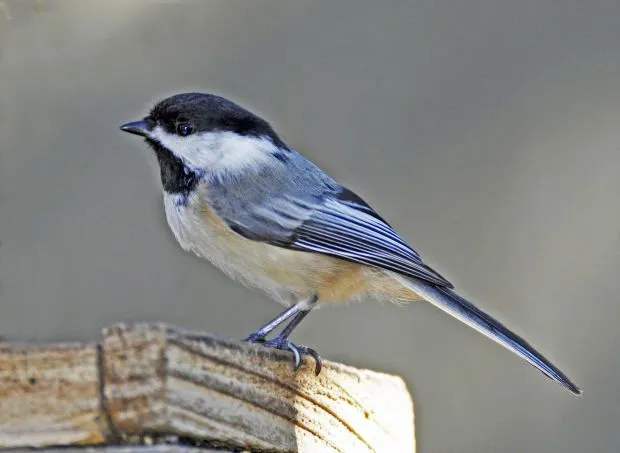
The black-capped chickadee is a common species in this state because there is a resident population throughout northern parts of North America.
However, bird lovers in the southern states like Florida and Texas are not as lucky as you are to attract these cute black-capped chickadees to bird feeders.
Hence, how can you tell you have found a black-capped chickadee in your bird feeder? It is a chickadee if it has a black cap, white underside, and a dark gray back. You might find it picking seeds from your feeder and stashing them in secret crevices.
A black-capped chickadee is one of the small species to attract because its body length is between 4.7 and 5.9 inches long.
You can offer black-capped chickadees suet, peanuts, or sunflower seeds.
2. American Goldfinch

We have jumped from one beautiful bird to another because an American goldfinch has a bright yellow body with black wings. That is what you will see when they are male American goldfinches in your backyard before winter.
When the season changes, the plumage changes too as it molts into brown-olive feathers. We have talked about the male, so let us mention something about the female bird. It has a brown body but without the streaks of a sparrow.
Do you know it’s the state bird? Iowa has a resident population; thus, you can host it in your backyard throughout the year. However, migratory birds in other states winter in Florida.
It is a small species between 4.3 and 5.1 inches from the tip of the bill to the tail. Foods that bring it to a bird feeder are bird seeds like sunflower seeds, plus wild seeds from grass and thistle.
3. Red-bellied Woodpecker
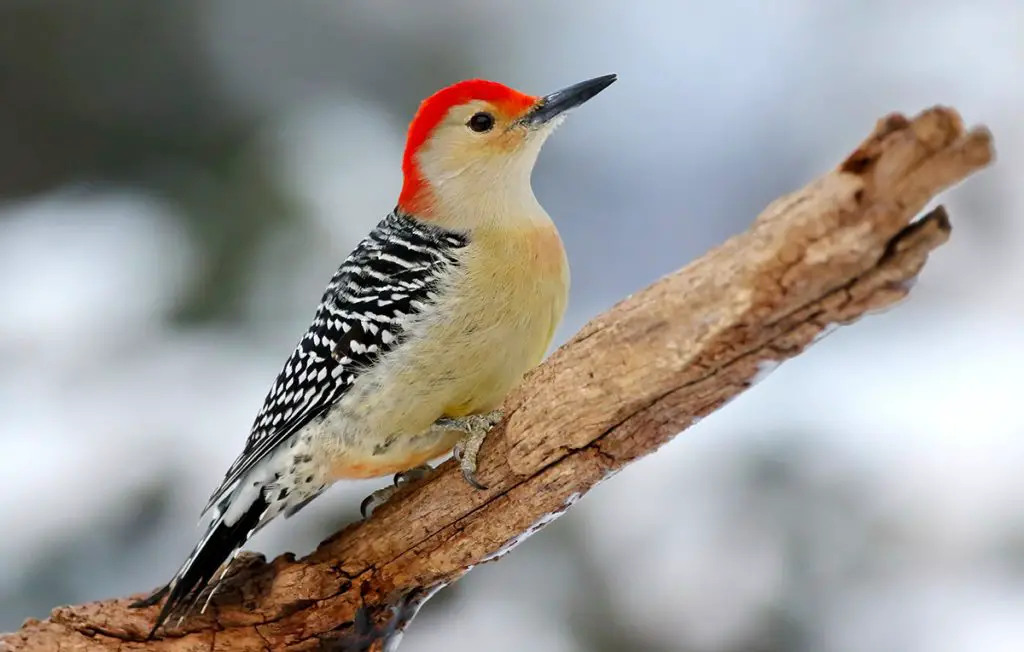
The red-bellied is another species you see any time of the year in Iowa.
To know there are red-bellied woodpeckers on your property, identify a species of about 9.4 inches, with a red crown, barred back, and a pale belly. The females have red feathers on the nape, whereas males red-bellied have reddish feathers from the top of the head to the nape.
Since this is an eastern bird, Iowa has a resident population that will visit your backyard any time of the year. A red-bellied woodpecker has similar feeding behavior to a white-throated nuthatch because it inserts nuts into tree trunks and then cracks them open. You should see it in action.
4. House Finch
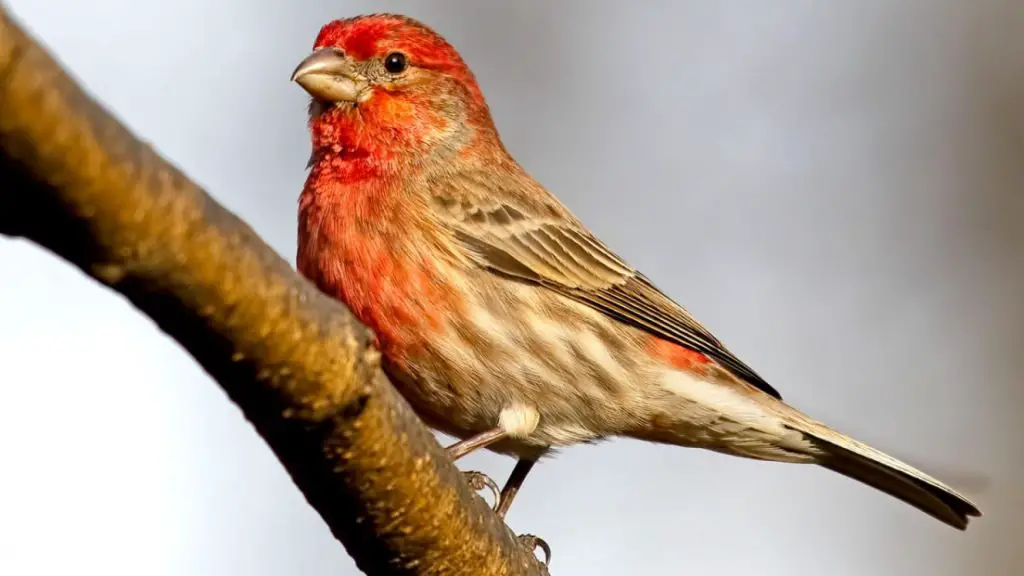
This western species is widespread throughout eastern and western states, except states neighboring Iowa, such as Nebraska, Kansas, and South Dakota.
A finch is an invasive avian that builds nests in human structures, one of the reasons many homeowners fear having finches on their property. A male house finch has brownish streaks plus a rosy face and chest. A female has almost similar plumage but without rosy feathers.
House finches might be the first birds of Iowa you see in your backyard because they are very curious. Additionally, they arrive in flocks, making it easier for other birds to find your feeder. If they are house finches in your bird feeding station, you can offer sunflower seeds, safflower, or nyjer.
5. American Robin
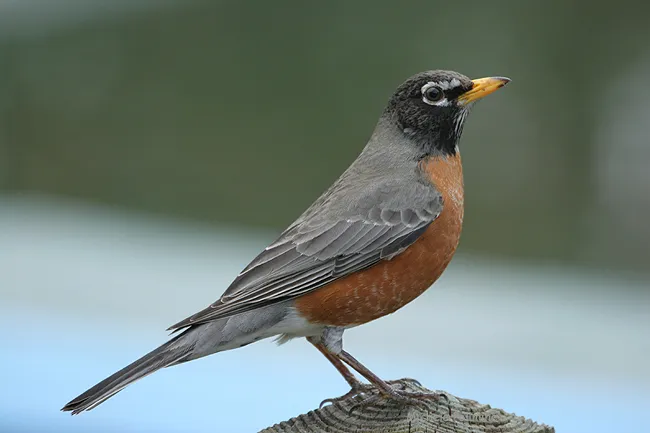
It is among the simplest birds to identify because it only has two color patterns: grayish backs and rusty underbellies. Size-wise, American robins are between 7.9 and 11 inches long, about twice the size of a downy or a chipping sparrow.
These avians are not very fond of birdseed, although they come to bird feeders occasionally. Hence, offer mealworms or plant native fruit trees to keep them around.
6. Bald Eagle
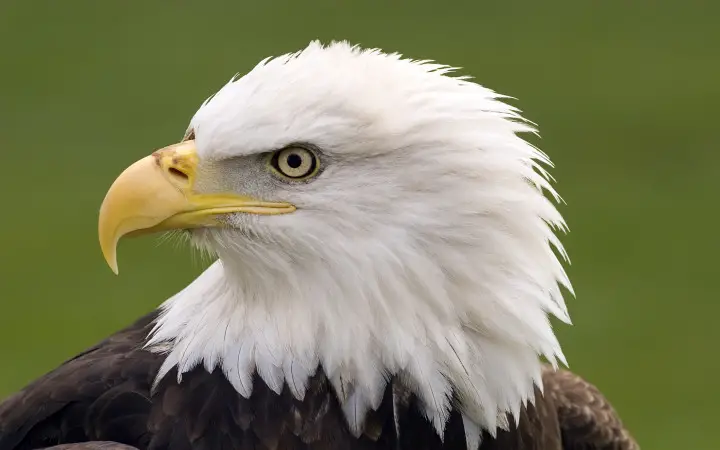
This eagle is the largest species on our list because its body is between 27.9 and 37.8 inches long. The bald eagle is a shoreline bird that feeds on fish, waterfowl, and carrion. The ones in Iowa are seasonal visitors because they are wintering birds.
You might be one of the fortunate backyard birders to see a bald eagle even though it will only perch on the trees on your property. Consequently, watch out for birds with long wings, a white head, and dark brown plumage.
These avians are not conventional visitors because when you look at the food options mentioned above, it is unlikely any homeowner would provide such.
7. Northern Cardinal
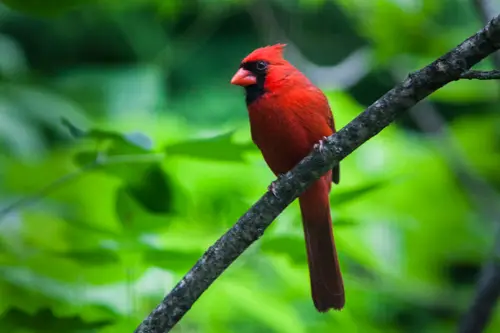
Male northern cardinals have red bodies and a striking red crest, while the female birds have the same features but are brownish with red tinges here and there.
The northern cardinal is one of the common backyard birds in Iowa, so there are always a few cardinals foraging on the ground around your feeder, looking for centipedes.
8. Downy Woodpecker
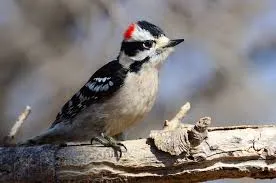
The downy is one of the smallest woodpeckers you will see in Iowa. The 5.5 to 6.7-inch small birds have black and white stripes on their head, black wings with white spots, barred white outer tail feathers, and a red patch on the back of the head. Eastern woodpeckers are lighter than the ones in western North America.
Downy woodpeckers are common backyard birds in Iowa that you can impress with suet and bird seeds. You will also find downy woodpeckers drinking nectar from hummingbird feeders.
9. Mourning Dove
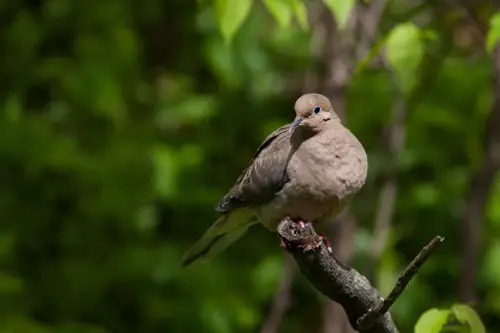
This one does not mind spending the whole day in your bird feeder or perched on a fence post in your backyard as those are the two best places it can get grains or look out for plantations with wild grass.
The mourning dove is a medium-sized bird of between 9.1 and 13.4 inches. It loves walking on the ground near a tray feeder, picking fallen seeds. You will know it is a mourning dove when you see a gray bird with black spots and pink legs.
10. American Crow
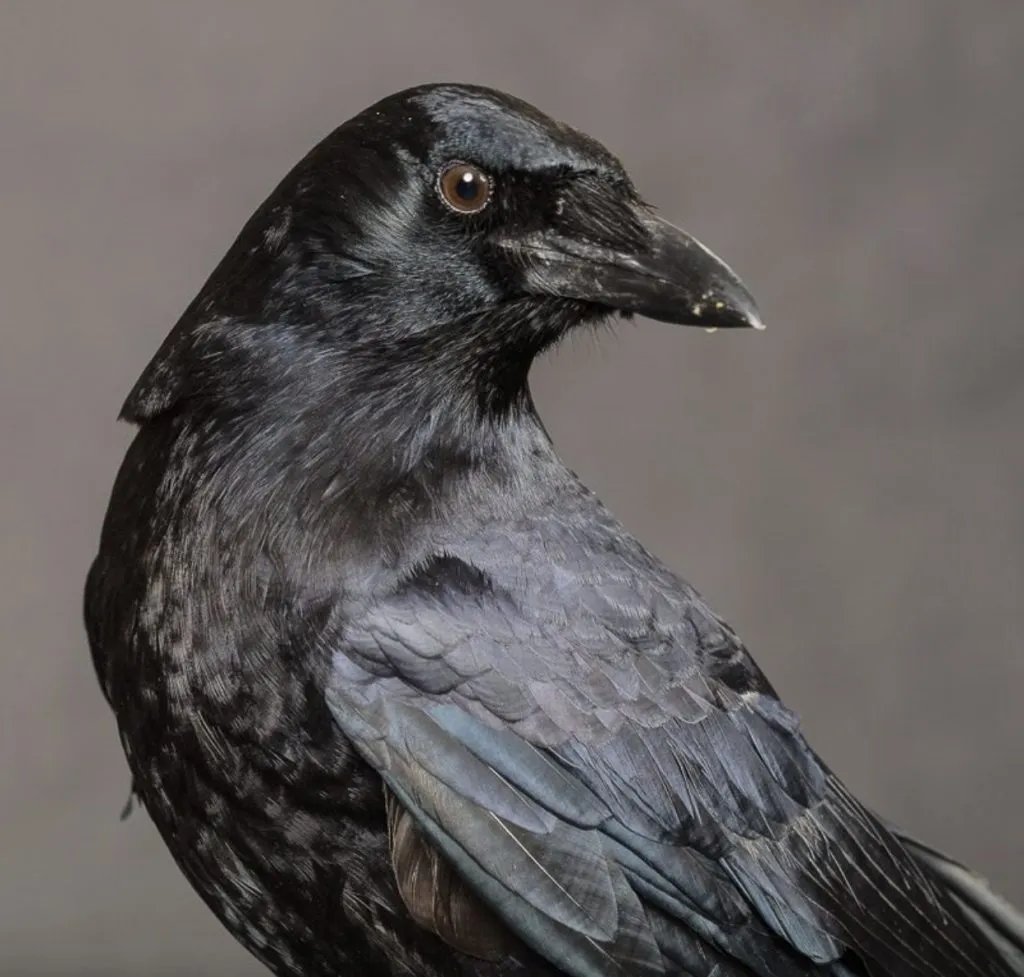
Crows are among the predators that come to backyards. They eat bird eggs and nestlings and disorganize your backyard as they go through your trash looking for food.
Beyond these evils, they are beautiful to look at because they have glossy black feathers with an iridescent sheen when seen up close.
Invite more American crows to your property if you can withstand their persistent cawing calls.
11. House Sparrow
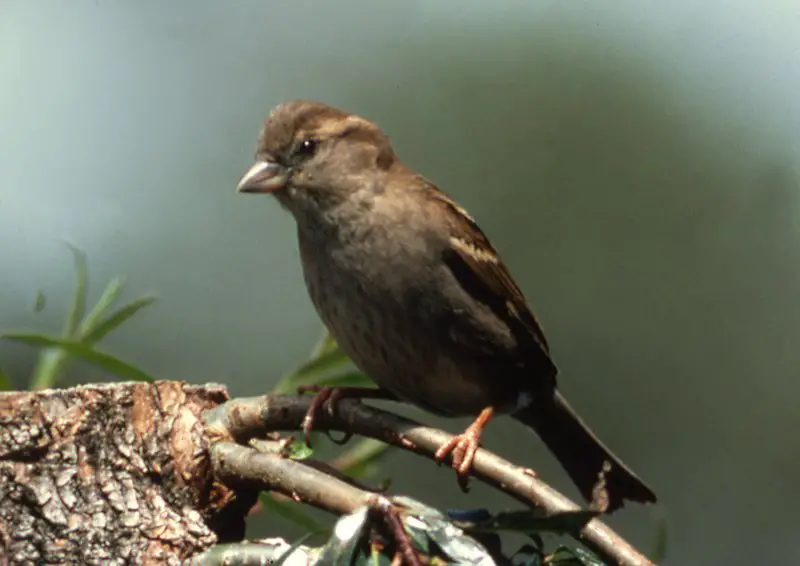
You can tell a male house sparrow by its black bib and throat. Both birds have brown backs with black streaks and brownish underbellies.
The house sparrow is an invasive species introduced in the eastern states and is now widespread throughout North America. The problem with encouraging house sparrows to take over your backyard is that they compete with bluebirds and purple Martins for nesting space.
If your backyard is peaceful and no birds terrorize each other, encourage more house sparrows by giving them cracked corn, milo, and millet.
12. Blue Jay
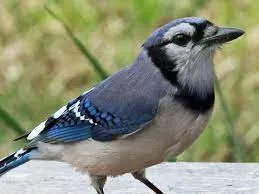
Like the American crow we mentioned earlier, blue jays are also predatory. They are slightly larger than the birds they harass, such as American robins and northern cardinals, because blue jays average 9.8 to 11.8 inches long.
Blue jays are beautiful backyard birds with blue backs and white underbellies. When you see them, you will get the urge to encourage them into your backyard and ignore the effect they will have on other species.
They are intelligent birds that even mimic red-shouldered hawks. Some bird lovers allege they mimic hawks as a warning to the flock, while others say they do this to scare smaller birds.
13. Barn Swallow
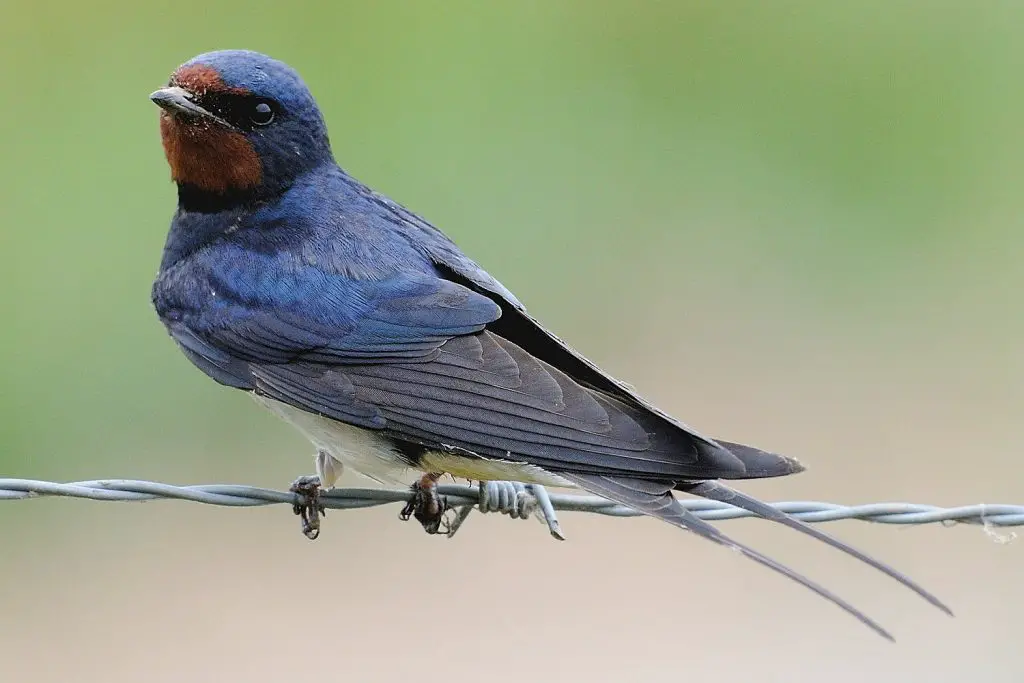
You might have to change your supplies slightly because, unlike other birds that love seeds, barn swallows only come to your backyard for egg or oyster shells. You have to oblige if you want to see this beautiful bird with a dark blue back and a tawny underside.
Alternatively, plant trees insects love so that swallows have food when they visit your property. One of the first places you should look to see whether they are barn swallows in your backyard is your gazebo or barn, as this species builds cup-shaped nests made of mud and grass there.
We can say barn swallows are mid-sized birds since they are 5.9 to 7.5 inches long.
You will see more of these swallows in your backyard if there is a puddle where they can collect mud for their nests.
14. Hairy Woodpecker
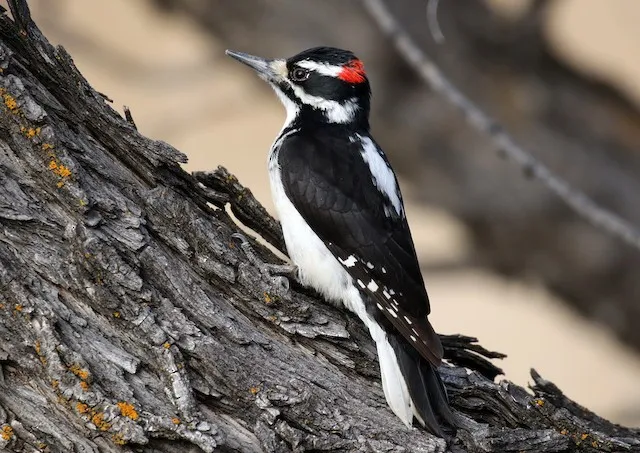
The minute you see this species, you will know it is a woodpecker because of its black and white plumage. However, you will have to look at it closely to differentiate it from downy woodpeckers. We have given you some details about this later on in the article.
Also, a hairy woodpecker is a medium-sized bird between 7.1 and 10.2 inches long.
15. Red-winged Blackbird
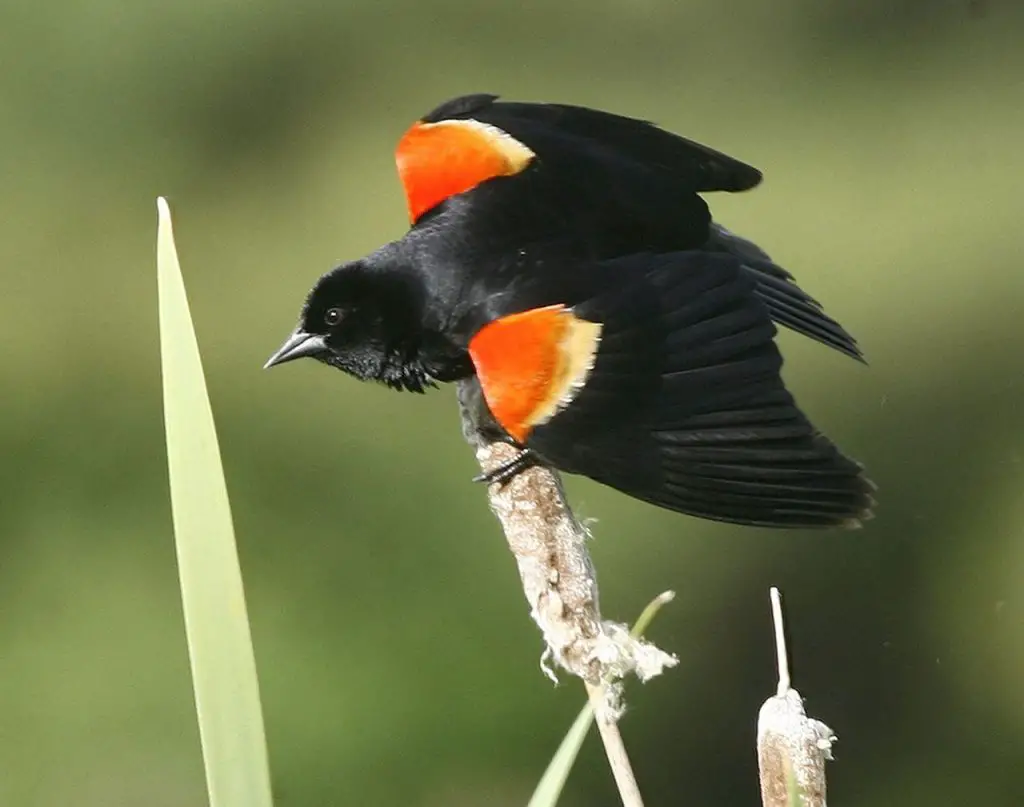
This blackbird is smaller than an American crow and has bold red and yellow patches on the shoulders. You can differentiate male and female red-winged blackbirds by their plumage, as males have dark bodies like the American crow while females are brown-streaked.
These backyard birds love insect larvae, so even if the trees in your backyard do not have berries, these blackbirds can survive on spiders and insects.
16. Northern Harrier

A harrier is one of the larger birds in Iowa as it measures up to 19.7 inches from its bill to tail. Northern harriers are not the best backyard visitors because songbirds are part of their diet.
You can tell they are around when you see a bird with a long tail, a white rump, a brown-streaked underside, and a grayish back. These birds have a breeding range in the north and wintering grounds in the southern states.
17. Song Sparrow
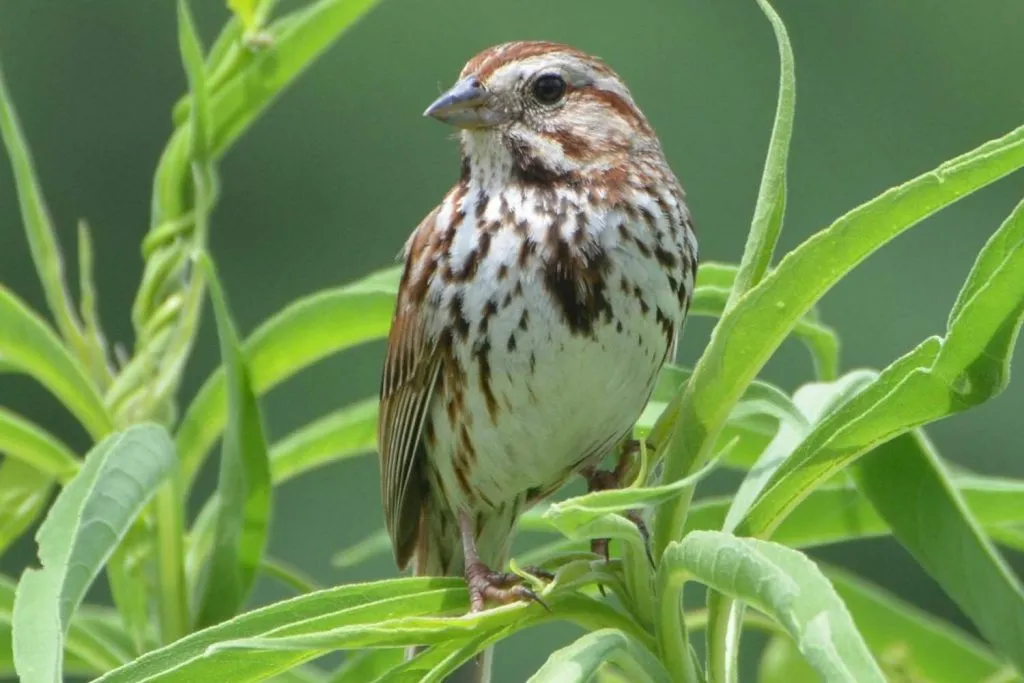
It is another of the many sparrows you will see in Iowa. This medium-sized bird flies north during the breeding season and migrates to Florida to winter there. Iowa is in the resident range, meaning you will see song sparrows all year round.
Like other sparrows, it is brown-streaked. Look for a tiny bird on your lawn with an average body length of 4.7 to 6.7 inches.
18. Eastern Bluebird
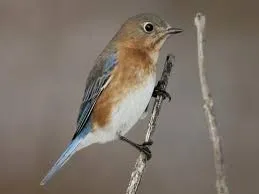
If you hope to attract the most stunning backyard birds, put the eastern bluebird top on your list because it has the most beautiful plumage.
We are talking about a bird with a back similar to a blue jay because it is blue. But, it does not have a black necklace, and its belly is reddish. Those are the plumage colors of a male eastern bluebird, as a female bird has a grayish back with bluish wings and an orange-brown underside.
Eastern bluebirds eat insects, so refill your bird feeders with mealworms.
19. Chipping Sparrow
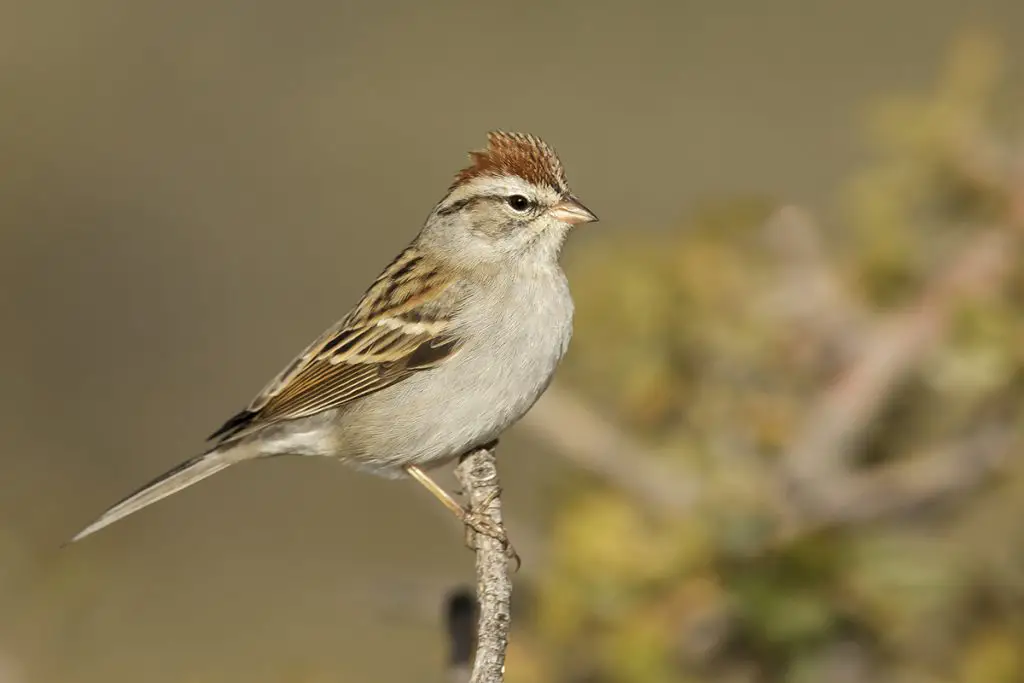
Unlike most of the common backyard birds that prefer a platform or tube feeder, a chipping sparrow will go for fallen seeds. Attract it with black oil sunflower seeds to make it feel at home in your backyard. Even better, scatter them on the ground.
Differentiating a chipping sparrow from other sparrows on your lawn is easy because it is smaller, with a body length between 4.7 and 5.9 inches. Its wingspan is only 8.3 inches.
In addition to body size, you can know a chipping sparrow by the brown streaks on its back, a rusty red cap, and gray underside. Winter birds have buffy-brown plumage.
20. White-breasted Nuthatch
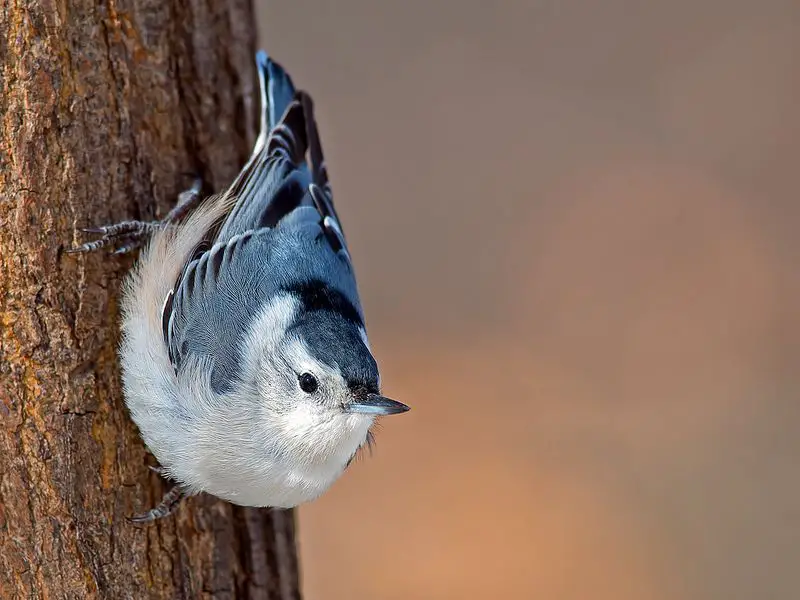
This small-sized bird has a grayish-blue back, a white underbelly, a black cap, and a white face.
A nuthatch is about the size of a song or chipping sparrow, as white-breasted nuthatches grow to a length between 5.1 and 5.5 inches.
Foods that bring white-breasted nuthatches to bird feeders include sunflower seeds, peanuts, and suet. Do you have these in your bird feeders?
21. European Starling
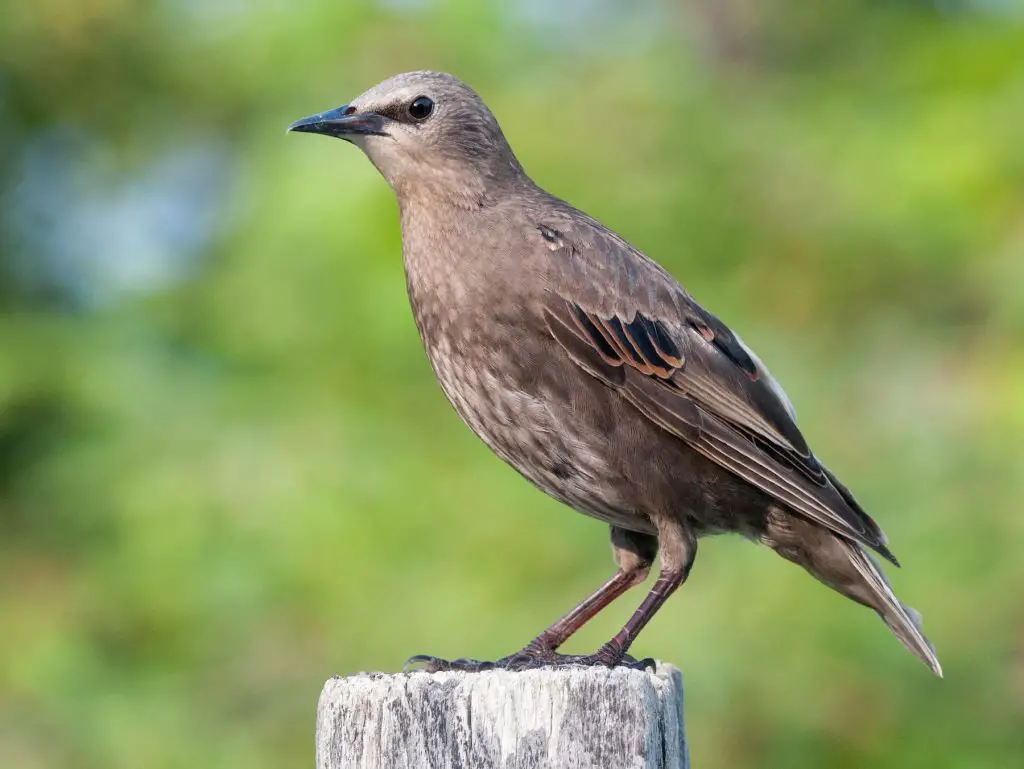
As we mentioned earlier, the European starling is an invasive species and one that you find in all the states, including Iowa.
This species gets along with humans and loves black oil sunflower seeds.
Even when you decide not to attract them, you will still find starlings mingling with other species in your bird feeders. Unfortunately, the interaction may end with the starling harassing smaller species.
It’s about the size of an American robin, as starlings are 7.9 to 9.1 inches long. When you see a flock of birds with glossy bodies, yellow bills, and white spots on their backs and wings, they are most likely starlings.
22. Dark-eyed Junco
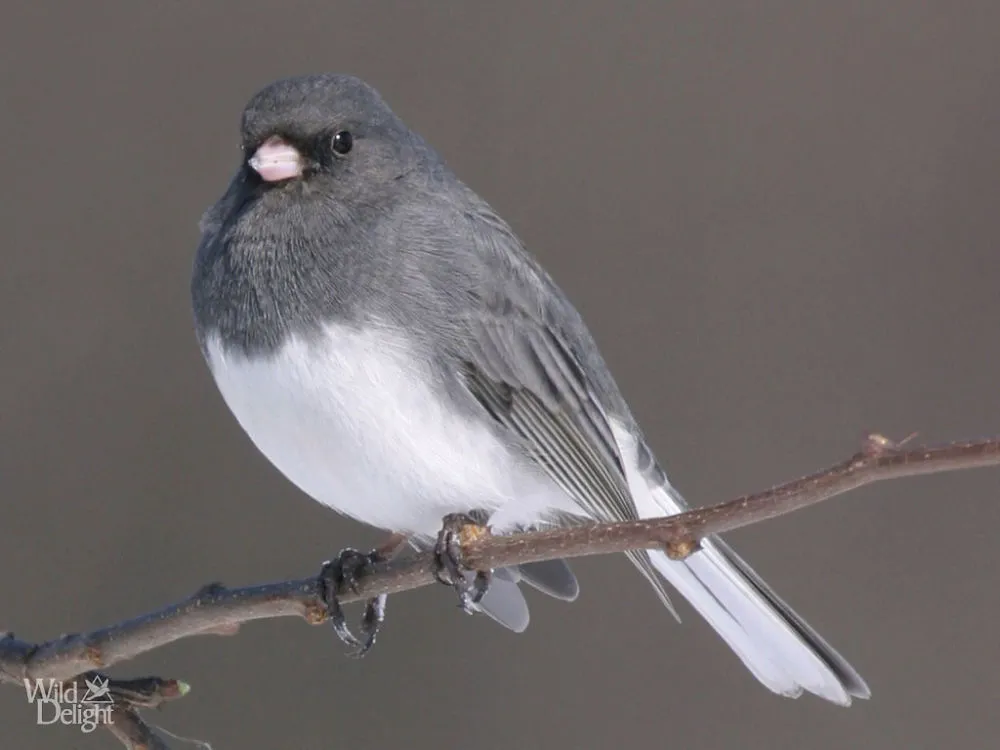
Juncos are about 5.5 to 6.3 inches long, and the ones you see in Iowa have slate-colored plumage. These wintering birds spend the breeding season in Canada and fly into the United States during the cold months.
Although you will see some perched on your feeder, a dark-eyed junco feeds on the ground, picking fallen seeds under your feeder.
23. Brown-headed Cowbird
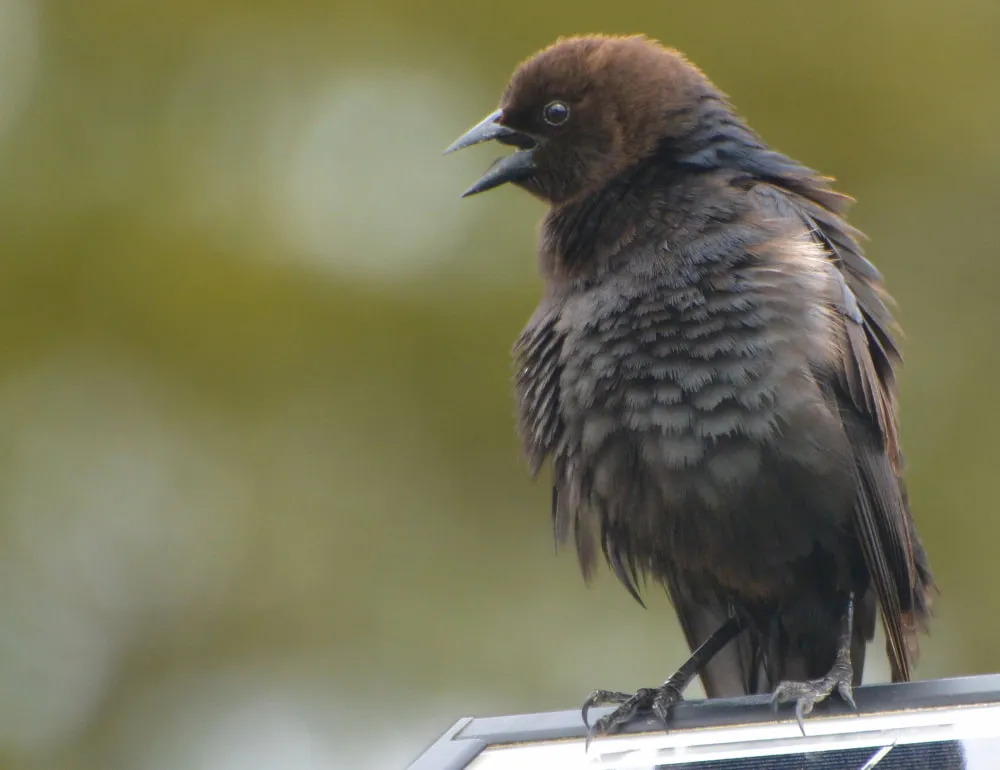
As the name suggests, they have brown heads. They are medium-sized birds between 7.5 and 8.7 inches long.
Only male birds have dark-brown heads and black bodies because females have light brown plumage. You will find them in the blackbird category of a birding journal, listed there for their black bodies and a habit of mingling with blackbirds.
24. House Wren
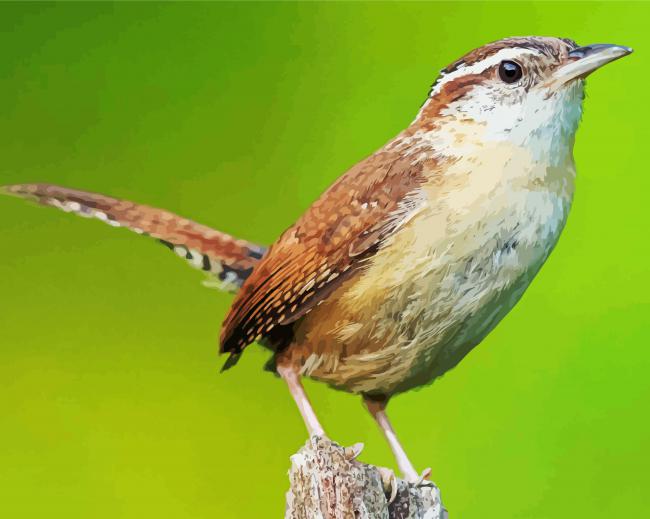
Iowa is home to breeding birds, as is most of the United States except the southern states that serve as wintering grounds. The house wren visits lawns often to use nest boxes or hunt insects
in shrubs. They build nests filled with twigs if your property doesn’t have nest boxes.
We can describe a house wren as a small bird with a brown body, dark bars on the wings and tail, and pale brown feathers on the throat.
House wrens are a few inches smaller than Carolina wrens, displaying an average length of between 4.3 and 5.1 inches.
25. Common Grackle
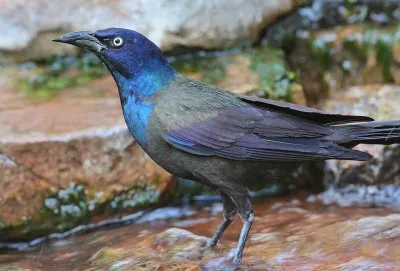
The grackles in Iowa and neighboring states are resident birds. They breed in parts of Minnesota, North and South Dakota, among other states near Iowa. The western area of North America does not have grackles.
This blackbird is a medium-sized species between 11 and 13.4 inches in length with a glossy bronze body, a bluish head with an iridescent sheen, and a long tail.
A common grackle eats typical bird foods like corn and unconventional foods like garbage.
You will probably spot these species as soon as you start bird watching in your backyard because they are the most common birds in this state.
Roaming Tip: Proceed here to visit your next destination as an armchair traveler and avid birdwatcher (you could do this right after finishing this post, of course!) — Pennsylvania Birds.
Tips On How To Identify Birds In Your Backyard
It’s disheartening to see a species and not know how to differentiate it from another one you saw earlier.
For instance, when you see two types of sparrows with brown streaks, you need another identification detail to tell them apart.
We hope the tips below will help you identify any species in your backyard.
Identify Bird Families
Learn the traits of different bird families like pigeons, hummingbirds, woodpeckers, and sparrows.
The Size & Shape
When you know the body length, you can compare and contrast species. For example, a downy woodpecker looks like a hairy woodpecker; therefore, when you know their body length, you can tell them apart. In this case, a hairy woodpecker measures 7.1 to 10.2 inches long, whereas a downy woodpecker averages 5.5 to 6.7 inches long.
When you compare the wingspan, a hairy woodpecker is longer from one wing to the other because it is 13 to 16.1 inches long, whereas a downy is 9.8 to 11.8 inches long.
Further, the two birds have different shapes when you look at their bills, as a downy woodpecker has a short one. Other features to compare are tail length, bill curve, legs, and wing shape.
Color Pattern
The easiest to ID are the ones with names that suggest their colors. For example, you would expect a blue Jay or the eastern bluebird to have blue feathers.
This method may not always work. For example, the red-bellied and the yellow-bellied sapsucker don’t have such markings on their bellies as their names suggest.
If that is the case, compare the color pattern of a bird in view with the field markings listed on your birding guide. Body parts to prioritize are the head, underbelly, back, tail feathers, wings, wing bars, and throats.
Behavior
Since we are talking about species in your backyard, one behavior that can help you differentiate species is how and where they feed. For instance, a northern cardinal is a ground feeder that picks fallen seeds.
Additionally, unlike other woodpeckers, the northern flicker digs the ground to pull out insects instead of drumming trees to excavate them. You will also see some solitary birds, others that come to your backyard in flocks, or species that lay eggs in the nest of other species.
Every behavior trait portrayed by a species differentiates it from another.
Song & Call
With time, you begin to differentiate species by the noise they make while feeding in your backyard.
In conclusion, engage different approaches such as the behavior, field markings, and the color pattern of a bird so that you can combine those details and identify any species.
Nevertheless, this should not have you learning about all families of species that come to backyards because then you’ll miss the essence of this task because you will have an information overload. Focus on the families of species in this state, such as the birds discussed above.
Are you ready to ID birds now?
Watch This!
Frequently Asked Questions
What is the rarest bird in Iowa?
When you spot the rufous hummingbird, you’ll be among the few lucky bird lovers to have spotted it in Iowa. This state does not have many hummingbird species as only the ruby-throated hummingbird nests here regularly.
The first rufous recorded in this state was in 1986. There have been about a dozen and a half sightings since.
How many birds are native to Iowa?
Iowa has over 400 species inhabiting different ecosystems of this birding paradise. You find species like the black tern and the yellow-headed blackbird in the wetlands, especially in the northern area.
In the floodplains of the Missouri River adjacent to Loess Hills, you find the home of Swainson’s hawks, ferruginous hawks, and other raptors.
When touring the grasslands, you meet grasshopper hawks, Henslow’s sparrows, plus bobolinks. In short, to see as many species as possible, explore different habitats across the state.
What birds stay in Iowa in winter?
The black-capped chickadee is a resident bird that doesn’t migrate. Others found in this state during winter are dark-eyed juncos, American tree sparrows, purple finches, and pine siskins. You have every reason to continue bird watching during the cold months because some avians, such as the brown creeper, still come to your bird feeder for suet.
Does Iowa have crows or ravens?
Yes, you will come across different crows and ravens, including the common raven, American crow, and fish crow. However, the common raven is an accidental species seen a few times in a decade.
Conclusion
How many birds on our list have you seen so far? If your answer is all of them, you must be refilling your platform and tube feeders regularly to attract more avians. If attracting five species is a struggle, change your feeder location, add birding features like a birdbath, and change bird food.
Lastly, if you can’t tell the names of species that visit, use the tips we gave you to differentiate them.

